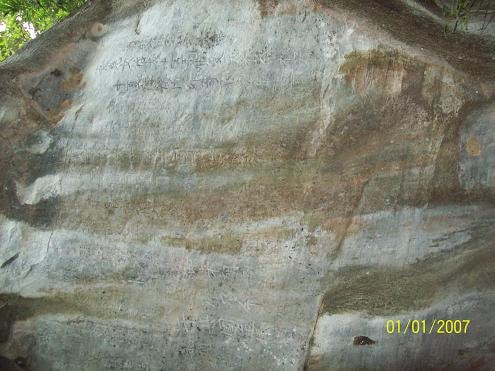A historical and cultural relic is deteriorating.
Located in the southwest, about 300 meters from Con Cuong town, Ma Nhai stele, a unique historical and cultural relic, is gradually fading away.
History records that in 1335, the southwest of Nghe An was constantly being harassed by rebels from outside, who robbed land, killed people, and robbed property. King Tran Hien Tong, along with his civil and military prime minister Nguyen Trung Ngan, personally went to supervise the battle.
The king set up his headquarters at Cu Don mountain, Mat Chau (now Thanh Nam village, Bong Khe commune, Con Cuong district). The Tran army used the tactic of both attacking and persuading the rebels to surrender. The rebels gradually retreated, but only one rebel, Nghich Bong, refused to surrender and continued to harass them more and more ferociously.
Because of the affairs of the court, King Tran Hien Tong had to return to Thang Long, and the rebels took advantage of the situation to concentrate on causing more chaos. Although the retired Emperor Tran Minh Tong was old, he still personally led the army to Mat Chau and Cu Don regions with Prime Minister Nguyen Trung Ngan to quell the rebellion.
|
|
A king and a general who had been through life and death together, were of one mind and one heart, now fought together. Just one battle made the rebels "crazy and confused", quickly retreating and kneeling to beg for surrender and pardon of death penalty. After defeating the enemy, the King sat on a boat in a poetic scene. The retired Emperor Tran Minh Tong issued an edict to retreat, then ordered Nguyen Trung Ngan to record this glorious victory on a stone arch called "Ma Nhai Ky Cong Van".
At that time, it was the intercalary month of the 12th year of Khai Huu era, the seventh year of At Hoi 1335. Thus, Ma Nhai stele is an article recording the glorious feat of the Tran Dynasty's mandarins and soldiers in protecting the border, reclaiming lost mountains and rivers, demonstrating the prestige of Dai Viet in the cause of consolidating and protecting the nation's independence.
After 675 years of sun, dust, time and human destruction on top of the stone dome, the water flow has changed, affecting the inscriptions on the stone, some of the inscriptions are covered by mold, the scenery in this cave is also deformed, without protection and repair, the Ma Nhai stele is at risk of being erased.
We hope that the State will pay attention and create conditions to restore Ma Nhai stele to serve eco-tourism and for descendants to forever remember the merits of their ancestors who bravely fought against foreign invaders, keeping the country peaceful and happy today.
Phung Van Mui








